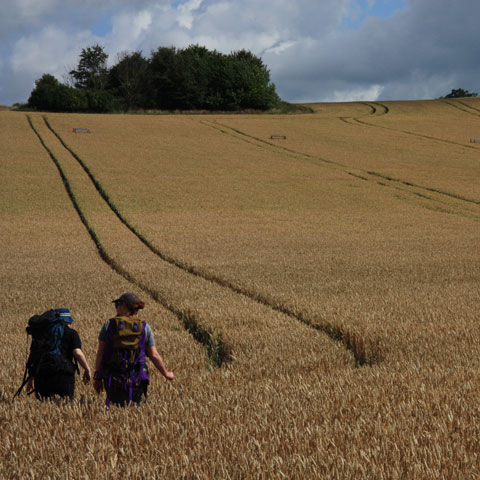Grasslands soils offer some insurance against climate change

The earth beneath our feet plays an important role in carbon storage – a key factor in climate change – and new research published in Nature Climate Change this week shows that in times of drought some types of soil perform better than others.
Research led by Dr Franciska de Vries of Lancaster University, showed that in drought conditions soil under agricultural grasslands was able to continue doing its job of containing carbon rather than releasing it into the atmosphere. Soil under intensively managed wheat fields, however was not so efficient.
The grasslands in the study also retained their nutrients better under drought conditions, when compared with wheat fields. The grassland soils did their job better because the soil biota in them consisted mainly of fungi, and the small animals which eat fungi, whereas in the wheat field they were mainly bacteria and bacterial-eating animals. Less fungi died because of the drought, so they could continue performing their functions.
The study, which set out to compare the stability under drought of soil biota of two common land use systems, was conducted in labs at Lancaster University and field studies in the south of England, near Reading.
Extensively managed grasslands are agricultural grasslands with low grazing densities. No fertiliser is added to the fields and they are not tilled. Wheat, however, is tilled every year, and receives a lot of fertiliser.
Dr Franciska de Vries of Lancaster University’s Environment Centre said: “These results show land use strongly affects the resistance of soil food webs to drought.
“As drought is widely predicted to increase as a result of climate change, it would be worth wile to promote these fungal-based soil food webs that are found under grasslands, because they can continue to perform their functions better under climate change, and prevent carbon and nitrogen losses, which can cause problems.
“In that sense fungal-based soil food webs are almost like an insurance against the effects of climate change.”
The research was funded by the European Union as part of the SOILSERVICE project, which involves several partners across Europe and is investigating conflicting demands of land use, soil biodiversity and the sustainable delivery of ecosystem goods and services. Professor Richard Bardgett of Lancaster University's Environment Centre was also part of the research team and principal investigator for Lancaster's component of this project.
Land use alters the resistance and resilience of soil food webs to drought, De Vries F.T., Liiri M., Bjørnlund L., Bowker M., Christensen S., Setälä H. & Bardgett R.D. (2012), is published in Nature Climate Change, 29 January.
Lancaster University’s research partners were the University of Helsinki in Finland Biologisk Institut, Terrestrisk Økologi in Denmark, and Southwest Biological Science Center, US Geological Survey, in Arizona, US.